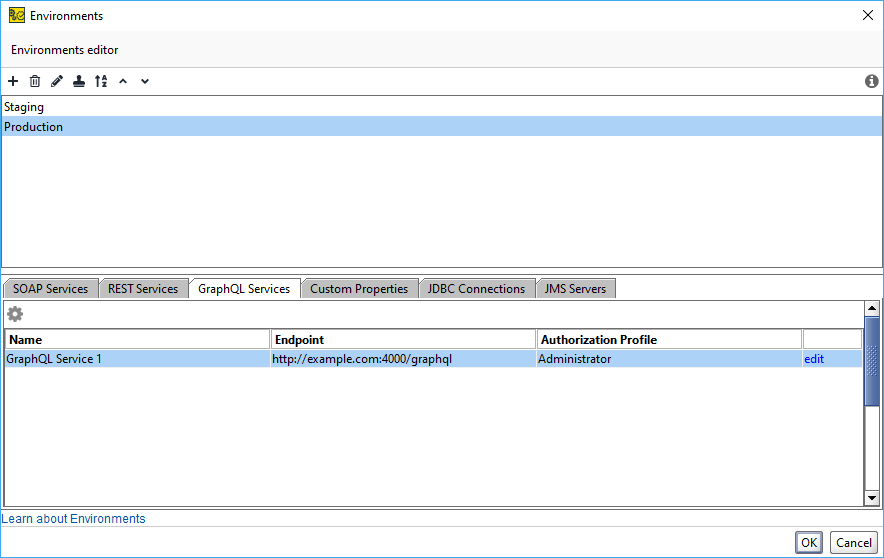The GraphQL Services tab of the Environments editor allows you to define environment-specific endpoints. The environment services will use these endpoints during test runs.
On the GraphQL Services tab, you can see all the available GraphQL endpoints in a table. The table has the following columns:
-
Name – The endpoint name.
-
Endpoint – The URL of the endpoint.
-
Authorization Profile – The authorization profile used in the selected environment for the endpoint.

To edit endpoint options, click edit in the endpoint’s row, double-click the endpoint, or select the endpoint and click ![]() .
.
Here, you can edit the following options:
| Option | Description | ||
|---|---|---|---|
| Name |
The service name.
|
||
| Endpoint |
The endpoint's URL. |
||
| Auth Profile |
The Authorization profile. Click Configure to open the Auth Manager. |
||
| Proxy Host |
The address of the proxy. |
||
| Proxy Port |
The port of the proxy. |
||
| Proxy Username |
The username for the proxy. |
||
| Proxy Password |
The password for the proxy. |
 |
The proxy settings of environment endpoints are ignored if you use the SOCKS proxy. |
Using Auth Profiles
To use auth profiles in environments, you need to create a profile.
Click Configure to open the Auth Manager, or configure the authorization in any specific request.
You can then select the profile in the environment options.
See Also
SOAP Services Tab
Custom Properties Tab
JDBC Connections Tab
JMS Servers Tab
Environments

